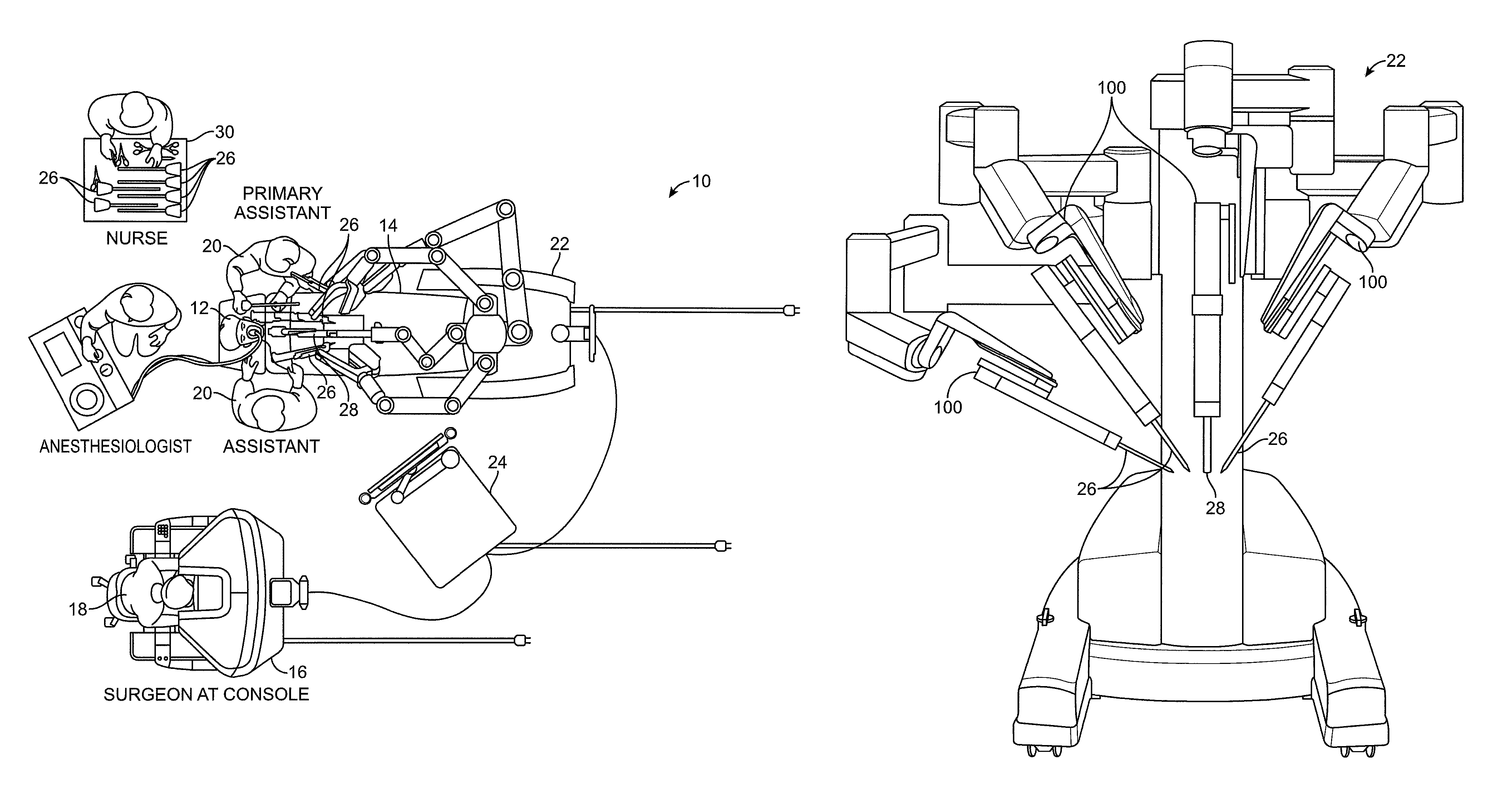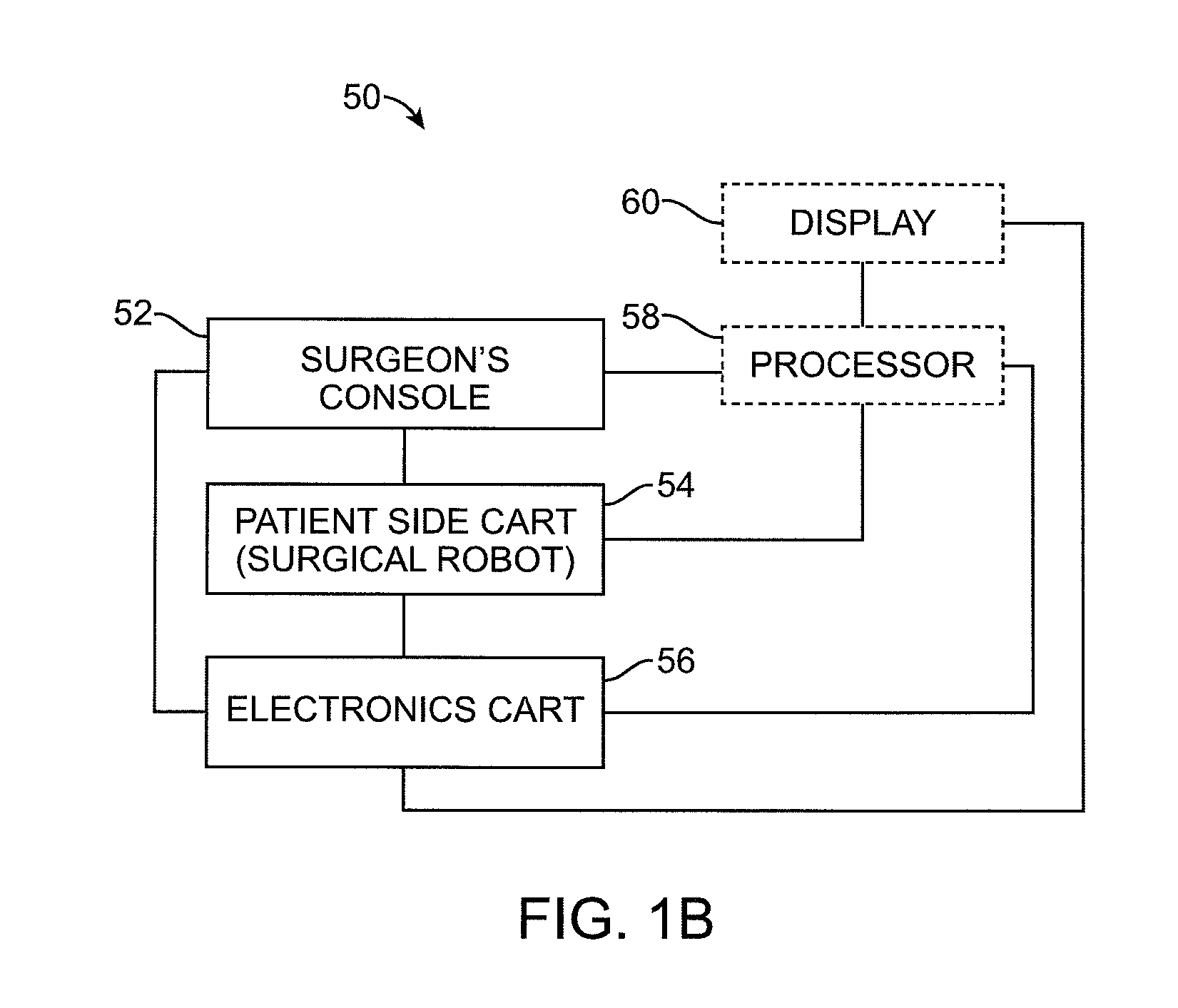Manipulator arm-to-patient collision avoidance using a null-space
a technology of null space and manipulator arm, applied in the field of improved surgical and/or robotic devices, systems, methods, etc., can solve the problems of inadvertent collision of moving manipulators and manipulators, relative small number of surgeries concurrently using minimally invasive techniques, and collision avoidance. , to achieve the effect of high configurable surgical robotic manipulators and avoid collisions
- Summary
- Abstract
- Description
- Claims
- Application Information
AI Technical Summary
Benefits of technology
Problems solved by technology
Method used
Image
Examples
Embodiment Construction
[0033]The present invention generally provides improved surgical and robotic devices, systems, and methods. The invention is particularly advantageous for use with surgical robotic systems in which a plurality of surgical tools or instruments will be mounted on and moved by an associated plurality of robotic manipulators during a surgical procedure. The robotic systems will often comprise telerobotic, telesurgical, and / or telepresence systems that include processors configured as master-slave controllers. By providing robotic systems employing processors appropriately configured to move manipulator assemblies with articulated linkages having relatively large numbers of degrees of freedom, the motion of the linkages can be tailored for work through a minimally invasive access site. The large number of degrees of freedom allow for reconfiguration of the linkages of the manipulator assemblies within a null-space of a kinematic Jacobian so as to move the linkages away from an outer pati...
PUM
 Login to View More
Login to View More Abstract
Description
Claims
Application Information
 Login to View More
Login to View More - R&D
- Intellectual Property
- Life Sciences
- Materials
- Tech Scout
- Unparalleled Data Quality
- Higher Quality Content
- 60% Fewer Hallucinations
Browse by: Latest US Patents, China's latest patents, Technical Efficacy Thesaurus, Application Domain, Technology Topic, Popular Technical Reports.
© 2025 PatSnap. All rights reserved.Legal|Privacy policy|Modern Slavery Act Transparency Statement|Sitemap|About US| Contact US: help@patsnap.com



